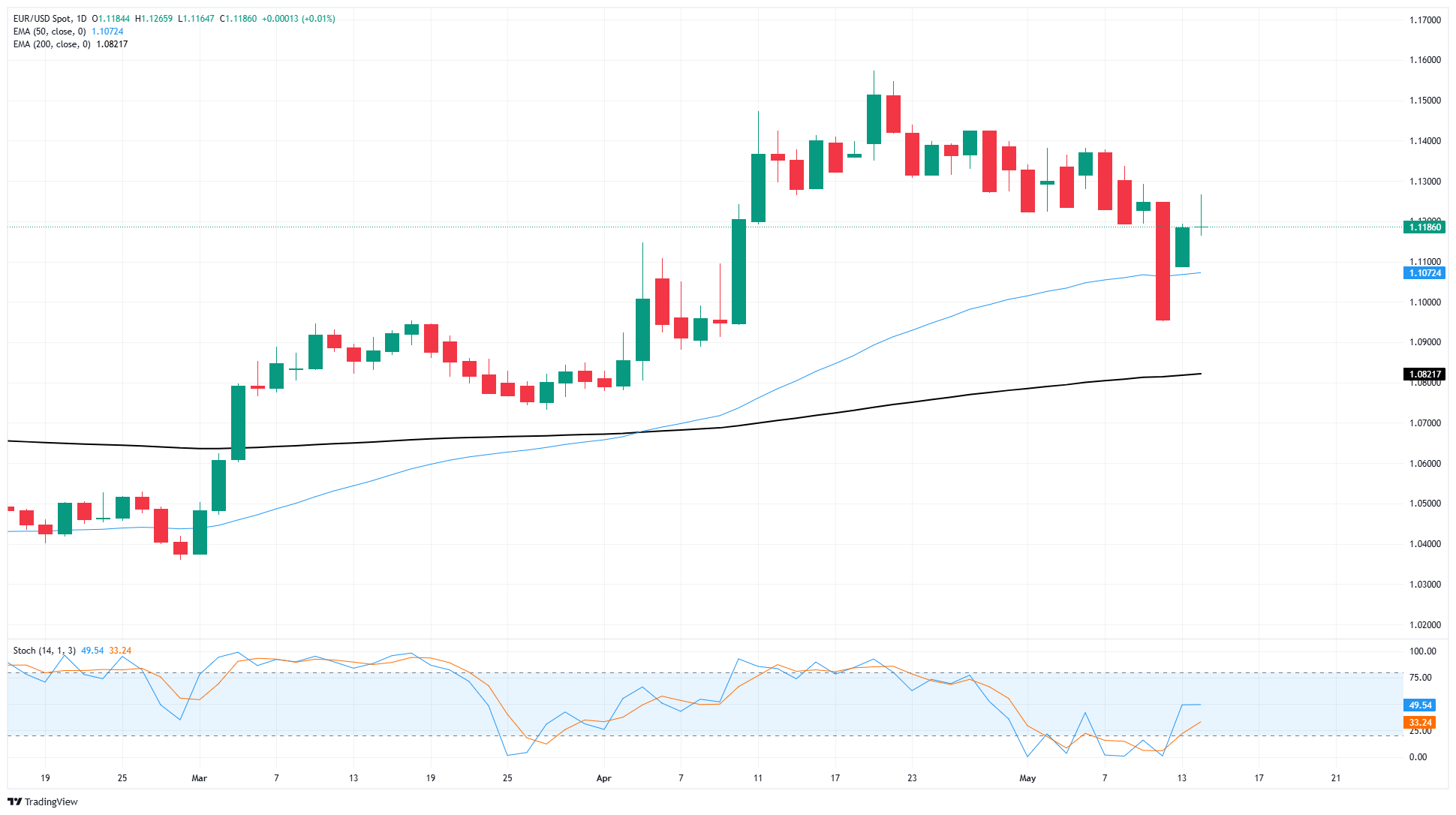EUR/USD middles as markets wait for a reason to move
- EUR/USD treaded water on Wednesday, sticking close to 1.1200.
- Final German inflation figures for April impressed nobody, as expected.
- US PPI inflation is just around the corner on Thursday.
EUR/USD trimmed momentum sharply on Wednesday, sticking to a flat holding pattern near the 1.1200 handle despite an early pop in bids. European economic data has been largely a non-starter this week, as is typical. However, a one-two punch of key inflation data from the United States (US) has given plenty of traders something to chew on.
German final Harmonized Index of Consumer Prices (HICP) for April came in exactly as expected on Wednesday, and data on the US side was strictly mid-tier, giving markets some breathing space between this week’s Consumer Price Index (CPI) inflation data released on Tuesday, and Thursday’s upcoming Producer Price Index (PPI) inflation figures.
Core PPI inflation is anticipated to decrease to 3.1% YoY, down from 3.3%. While easing inflation pressures is positive, markets are becoming more concerned about tariff effects, which are expected to start influencing headline economic data beginning as soon as May.
EUR/USD price forecast
Markets have thus far failed to muscle EUR/USD back over the 1.1200 handle this week, falling just shy of the key technical level. However, despite limited upside, the Fiber is still holding above the 50-day Exponential Moving Average (EMA) near 1.1070. Bullish momentum remains absent from the daily candlesticks, but technical oscillators are rolling over sharply from oversold territory, hinting at the potential for a bullish extension.
EUR/USD daily chart

Euro FAQs
The Euro is the currency for the 19 European Union countries that belong to the Eurozone. It is the second most heavily traded currency in the world behind the US Dollar. In 2022, it accounted for 31% of all foreign exchange transactions, with an average daily turnover of over $2.2 trillion a day. EUR/USD is the most heavily traded currency pair in the world, accounting for an estimated 30% off all transactions, followed by EUR/JPY (4%), EUR/GBP (3%) and EUR/AUD (2%).
The European Central Bank (ECB) in Frankfurt, Germany, is the reserve bank for the Eurozone. The ECB sets interest rates and manages monetary policy. The ECB’s primary mandate is to maintain price stability, which means either controlling inflation or stimulating growth. Its primary tool is the raising or lowering of interest rates. Relatively high interest rates – or the expectation of higher rates – will usually benefit the Euro and vice versa. The ECB Governing Council makes monetary policy decisions at meetings held eight times a year. Decisions are made by heads of the Eurozone national banks and six permanent members, including the President of the ECB, Christine Lagarde.
Eurozone inflation data, measured by the Harmonized Index of Consumer Prices (HICP), is an important econometric for the Euro. If inflation rises more than expected, especially if above the ECB’s 2% target, it obliges the ECB to raise interest rates to bring it back under control. Relatively high interest rates compared to its counterparts will usually benefit the Euro, as it makes the region more attractive as a place for global investors to park their money.
Data releases gauge the health of the economy and can impact on the Euro. Indicators such as GDP, Manufacturing and Services PMIs, employment, and consumer sentiment surveys can all influence the direction of the single currency. A strong economy is good for the Euro. Not only does it attract more foreign investment but it may encourage the ECB to put up interest rates, which will directly strengthen the Euro. Otherwise, if economic data is weak, the Euro is likely to fall. Economic data for the four largest economies in the euro area (Germany, France, Italy and Spain) are especially significant, as they account for 75% of the Eurozone’s economy.
Another significant data release for the Euro is the Trade Balance. This indicator measures the difference between what a country earns from its exports and what it spends on imports over a given period. If a country produces highly sought after exports then its currency will gain in value purely from the extra demand created from foreign buyers seeking to purchase these goods. Therefore, a positive net Trade Balance strengthens a currency and vice versa for a negative balance.

